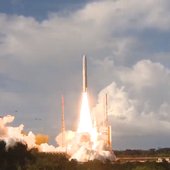28.07.2019
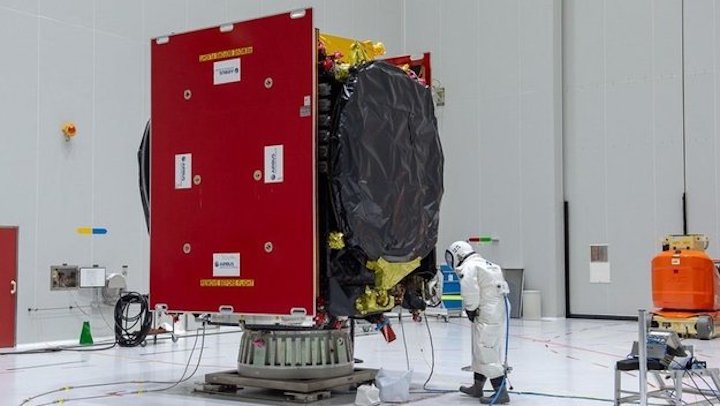
NEXT SATELLITE IN THE EUROPEAN DATA RELAY SYSTEM IS FUELLED
The second satellite to join the constellation that forms the European Data Relay System (EDRS) has finished fuelling and is days away from launch.
EDRS uses innovative laser technology to dramatically cut the time needed for Earth observation satellites to deliver information to the ground.
It enables people to observe the Earth almost live, accelerating responses to emergency situations and spurring the development of new services and products, thereby creating jobs and prosperity.
The second satellite – called EDRS-C – has now been fuelled with a propellant and an oxidiser.
These will be ignited after the satellite has left its Ariane 5 launcher in the low-Earth orbit phase of the launch and will enable it to climb to its final, geostationary position some 36,000 kilometres above the Earth.
The leftover fuel will be used to maintain the satellite in its correct position during its expected 15-year lifetime.
EDRS is a new, independent European satellite system, and is a public–private partnership between ESA and Airbus as part of ESA’s efforts to federate industry around large-scale programmes, stimulating technology developments and achieving economic benefits.
“Now that the satellite is fuelled, we are a step closer to placing it onto the Ariane 5 launcher and finalising it for launch,” says Michael Witting, EDRS project manager at the European Space Agency.
Quelle: ESA
----
Update: 30.07.2019
.
Flight VA249: Arianespace will orbit Intelsat 39 and EDRS-C with Ariane 5
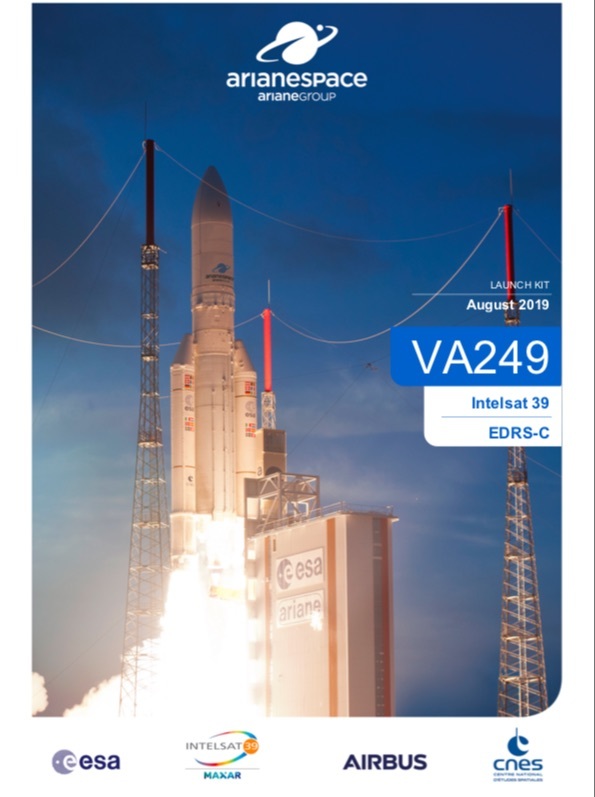

For its third flight with Ariane 5 this year, Arianespace will orbit two telecommunications satellites for long-term customers: Intelsat 39, for the operator Intelsat; and the EDRS-C satellite, based on a public–private partnership between the European Space Agency (ESA) and Airbus.
Through this mission, Arianespace highlights its ability to be at the service of innovative satellite solutions for commercial and institutional needs.
Flight VA248 will be performed from Ariane Launch Complex No. 3 (ELA 3) in Kourou, French Guiana.
The Launch Readiness Review (LRR) will take place on Friday, August 2, 2019 in Kourou to authorize the start of operations for the final countdown.
Intelsat 39 will be the 61st satellite launched by Arianespace for Intelsat since the first mission at its service in 1983. It will replace Intelsat 902 (launched by Arianespace in 2001) at 62 degrees East.
The Intelsat 39 telecommunication satellite is designed with both wide and high-powered steerable spot beams to meet the needs of broadband networking, video and government customers across Africa, Asia, Europe, the Middle East and Indian Ocean region. The steerable spot beams provide flexibility within the payload and enable customers to rapidly and efficiently respond to shifts in geographic or application requirements.
The satellite features C-and Ku-band capabilities to provide additional scale for Intelsat’s Flex managed service and enhance mobile connectivity for aero, maritime and government users operating across these regions.
Intelsat 39 was built by Maxar in Palo Alto, California.
The EDRS-C satellite is the second node of the SpaceDataHighway network. The SpaceDataHighway is the world’s first “optical fiber” network in the sky based on cutting-edge laser technology. It will help to improve environmental and security monitoring, disaster response and crisis management.
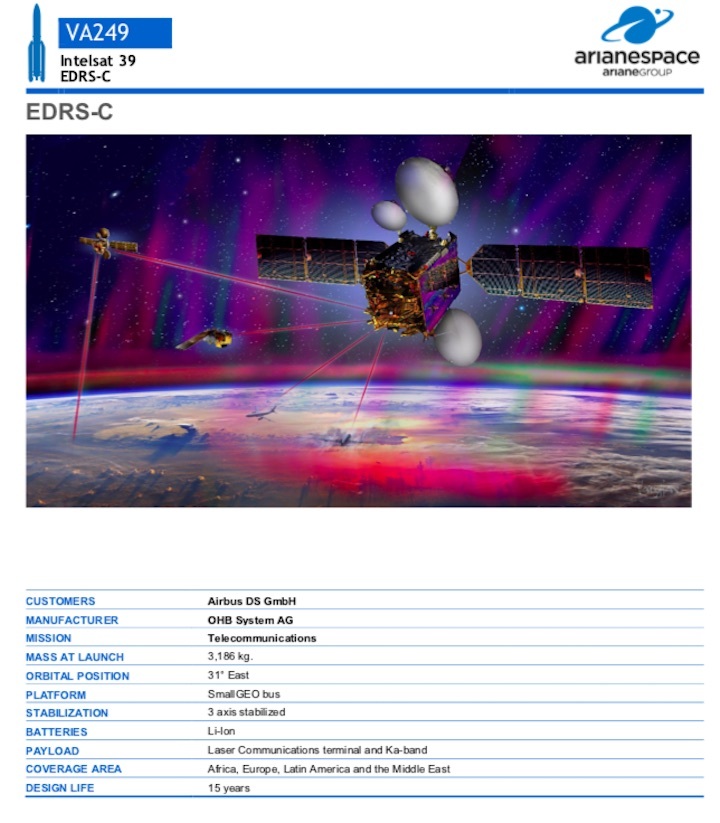
Launched into a geostationary orbit at 31° East, EDRS-C will be able to connect low-orbiting observation satellites via laser at a distance up to 45,000 km., as well as intelligence UAVs or mission aircraft.
The SpaceDataHighway is a public–private partnership between the European Space Agency (ESA) and Airbus, with the laser terminals developed by Tesat-Spacecom and Germany’s DLR Aerospace Center. Airbus owns, operates and provides services for the SpaceDataHighway. The EDRS-C satellite platform is supplied by OHB System AG.
In addition, a hosted payload – HYLAS 3 – was provided by Avanti Communications under a contract with ESA as a customer-furnished item to OHB.
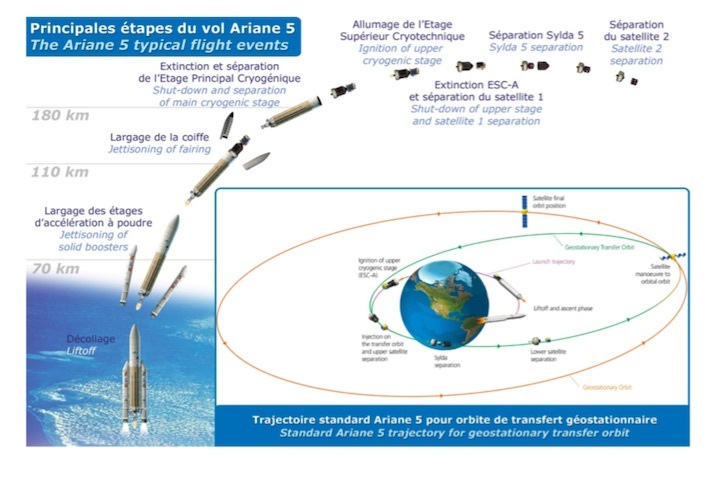
Quelle: arianespace
----
Update: 31.07.2019
.
EDRS-C MATED WITH LAUNCHER
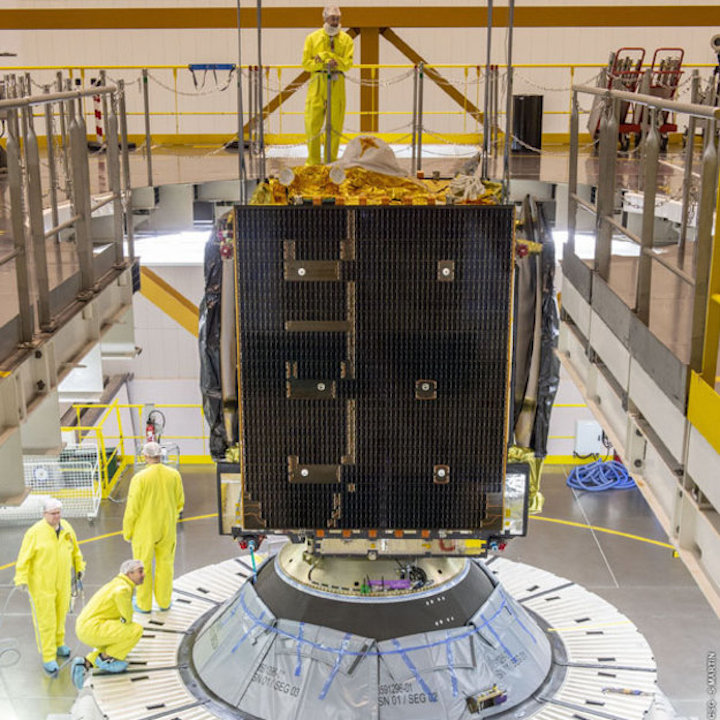
The second satellite to join the constellation that forms the European Data Relay System (EDRS) has been mated with its launch vehicle.
The EDRS-C satellite is due for launch on 6 August from Europe’s Spaceport in Kourou, French Guiana, aboard an Ariane 5 rocket.
EDRS enables people to observe the Earth almost live, accelerating responses to emergency situations and spurring the development of new services and products that create jobs and increase prosperity.
Dubbed the ‘SpaceDataHighway’ by its private operator, Airbus, EDRS uses innovative laser technology to dramatically cut the time needed for Earth observation satellites to deliver information to the ground.
Instead of sending data from Earth observation satellites to the ground – which introduces delays of up to 90 minutes, as the information can only be transmitted when the satellite is in line-of-sight with the ground station – the system sends the data away from the Earth to the EDRS satellites that are in a higher, geostationary orbit.
The EDRS satellites are in constant contact with their ground stations and can beam the data back down to Earth almost immediately.
The satellites can transmit data at a rate of up to 1.8 Gbit/s.
EDRS is a new, independent European satellite system, and is a public–private partnership between ESA and Airbus as part of ESA’s efforts to maximize the benefits to industry by taking an efficient management approach tailored to commercial best practices.
“When EDRS-C joins its sister satellite EDRS-A in orbit, it will boost the capacity and reach of the system, which will enable companies in Europe and Canada to develop new services and products,” says Michael Witting, EDRS project manager at the European Space Agency.
“ESA is helping to boost innovation by de-risking partners investments to meet market needs.”
Quelle: ESA
----
Update: 6.08.2019
.
Start von Ariane V-VA-249 mit EDRS Satelliten:
.
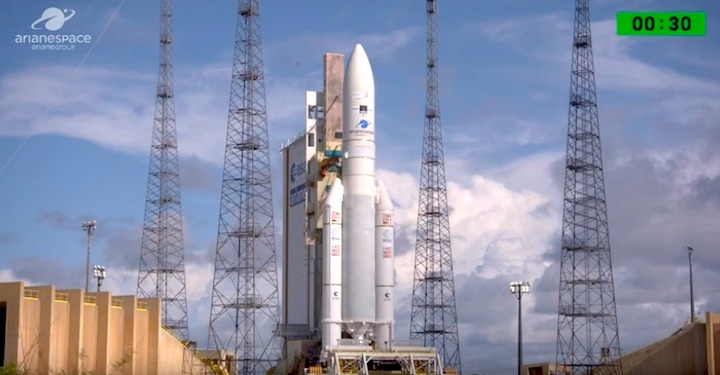
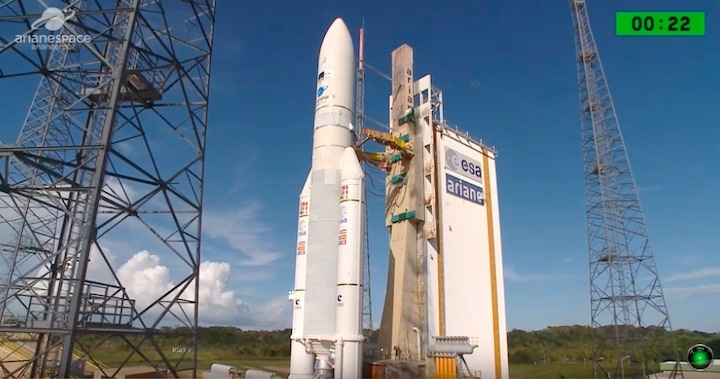
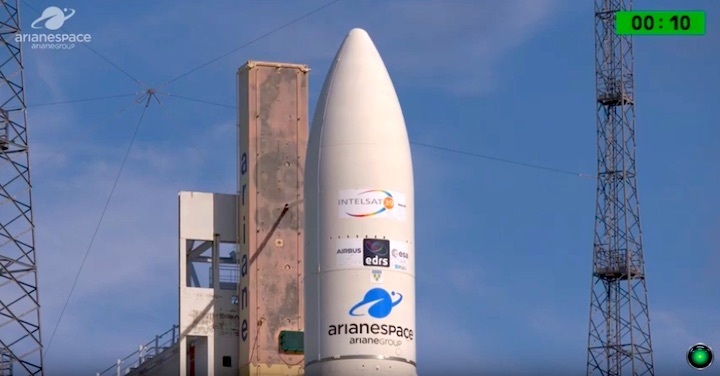
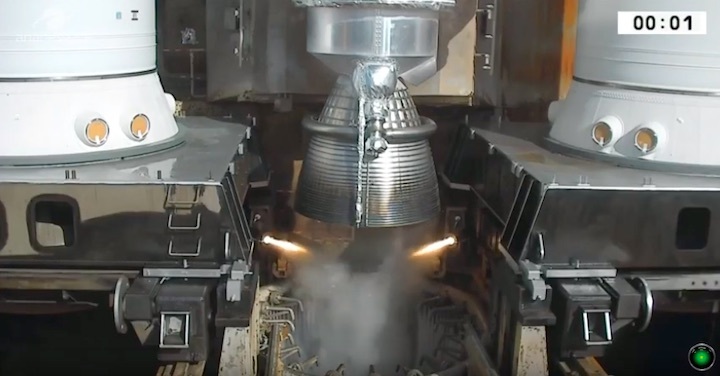
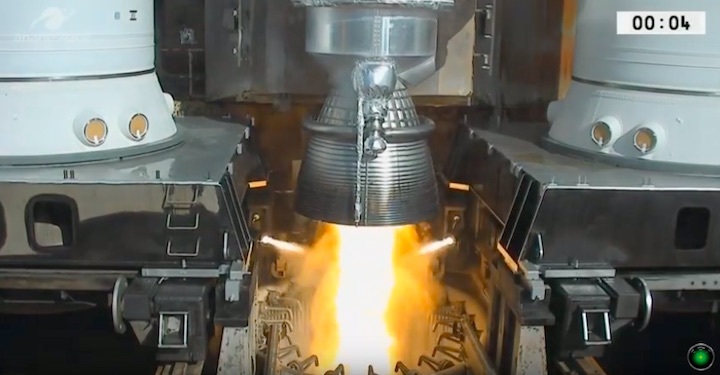
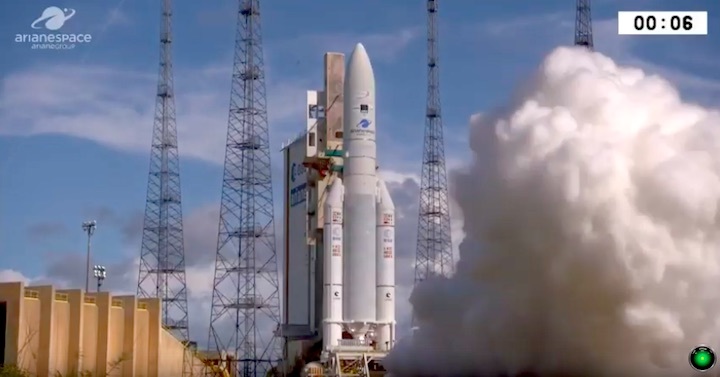
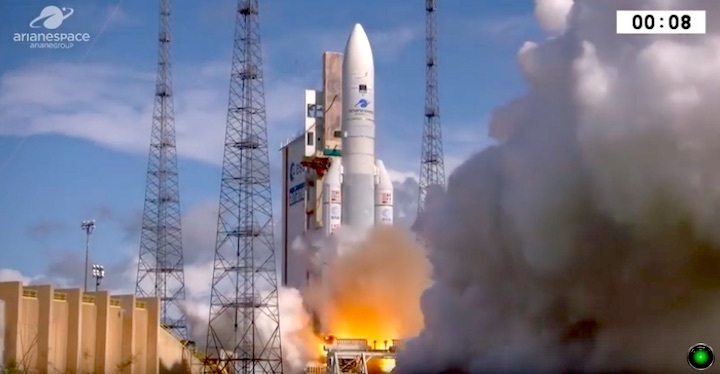
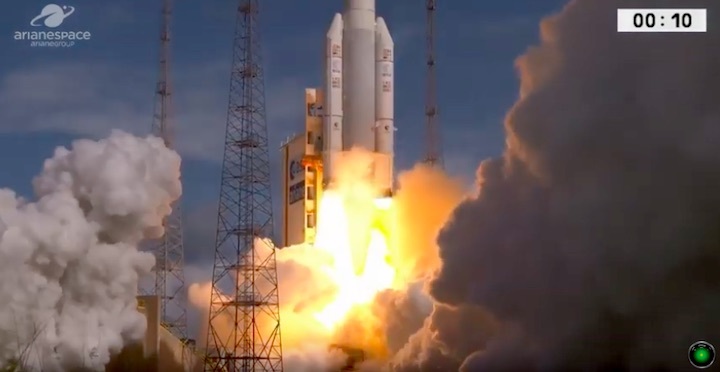
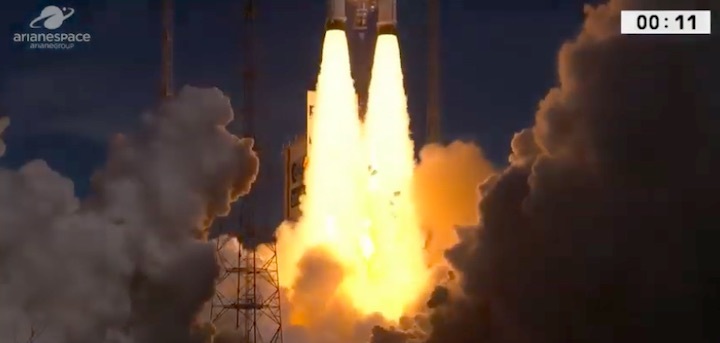
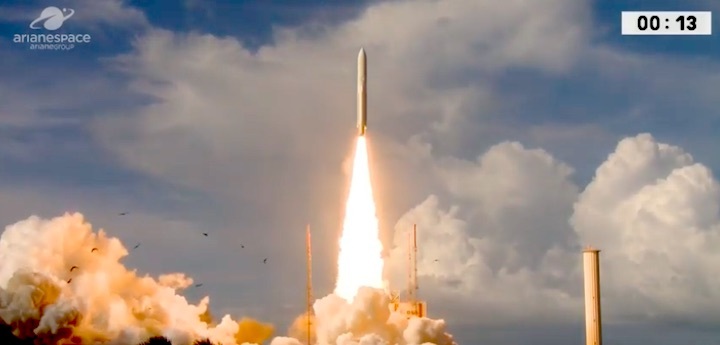
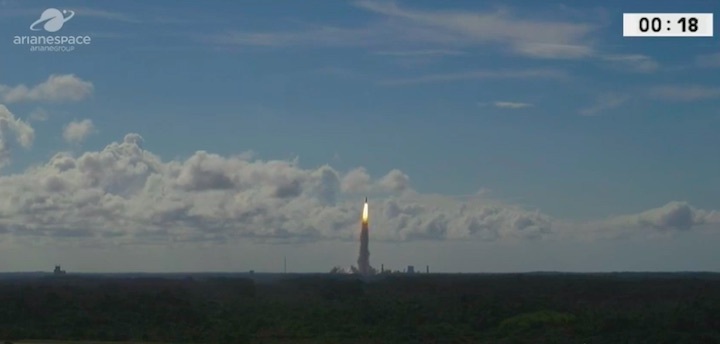
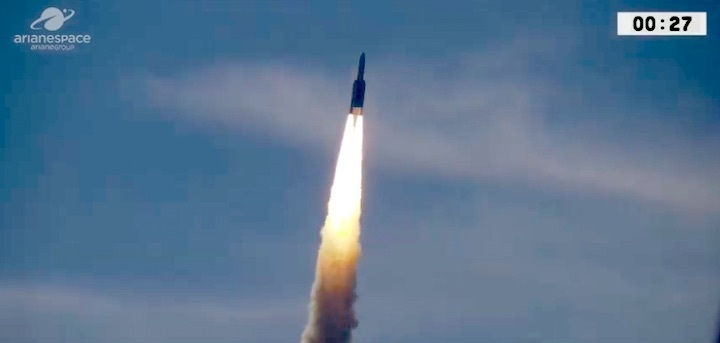
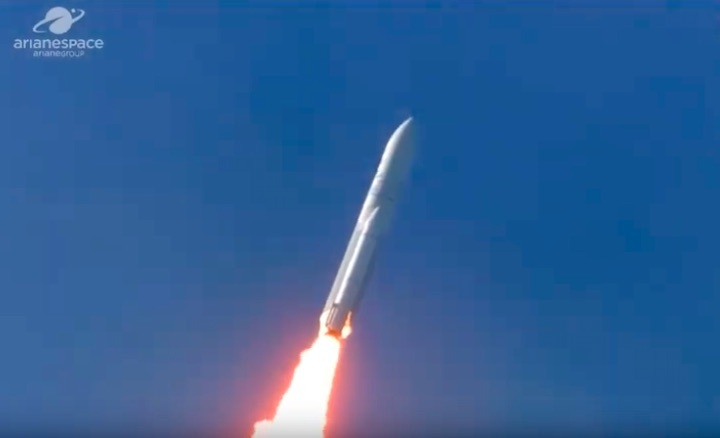
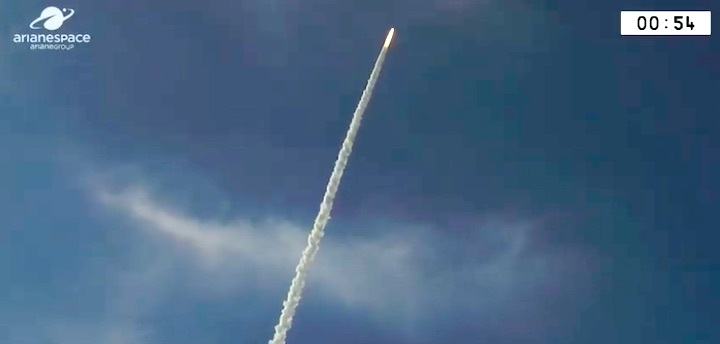
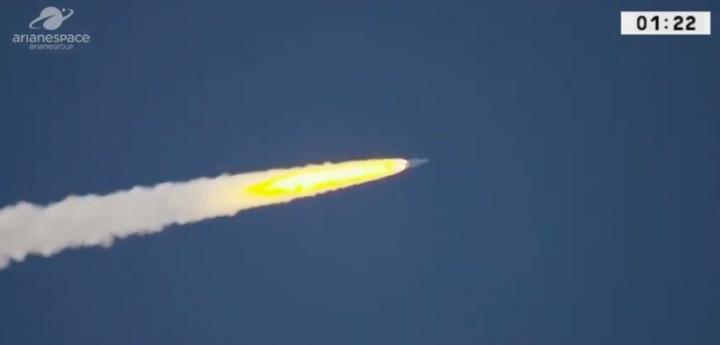
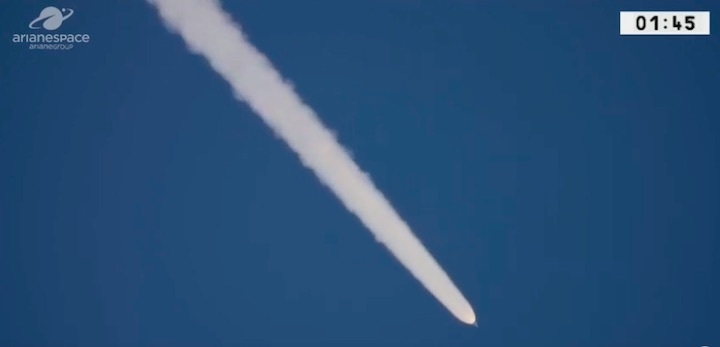
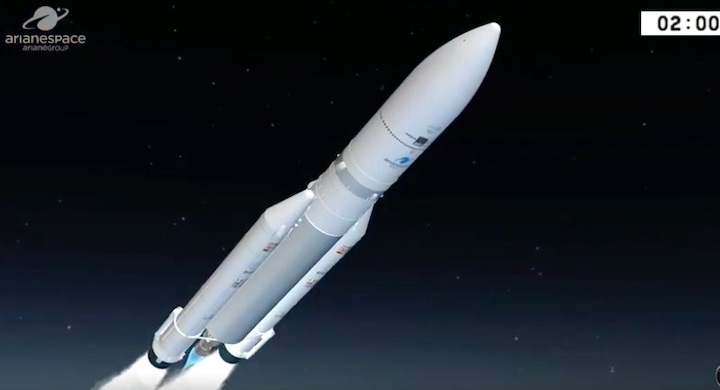
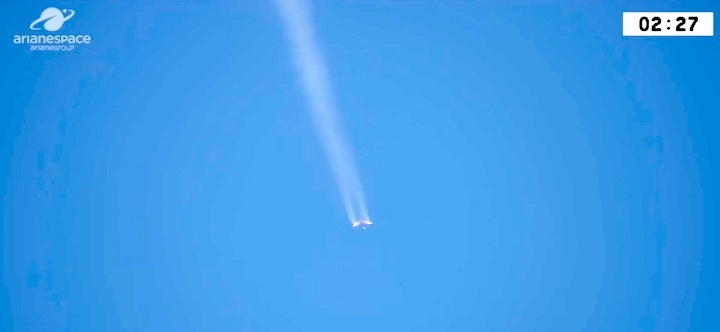
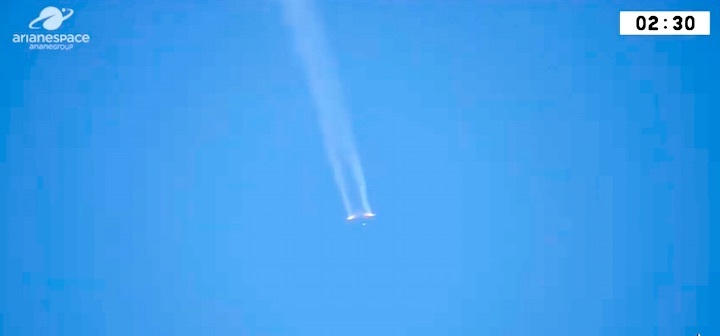
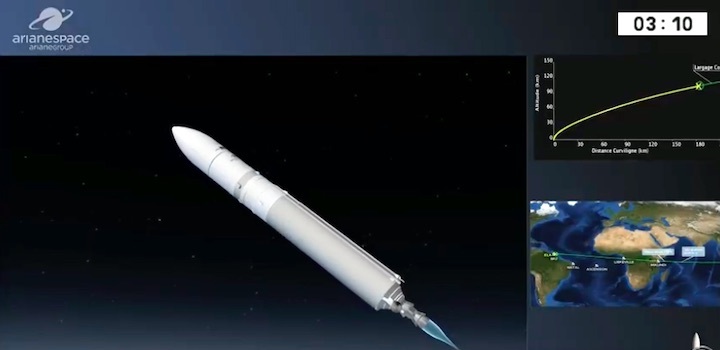
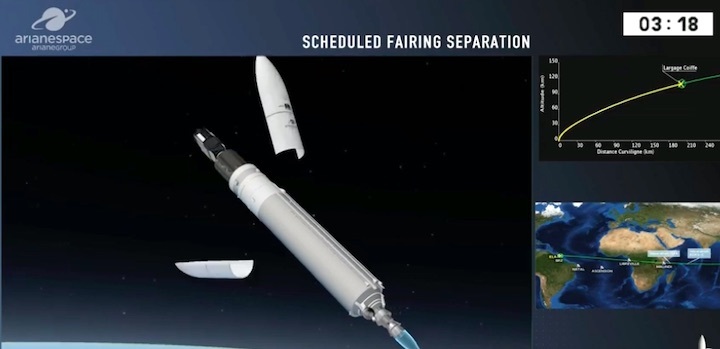
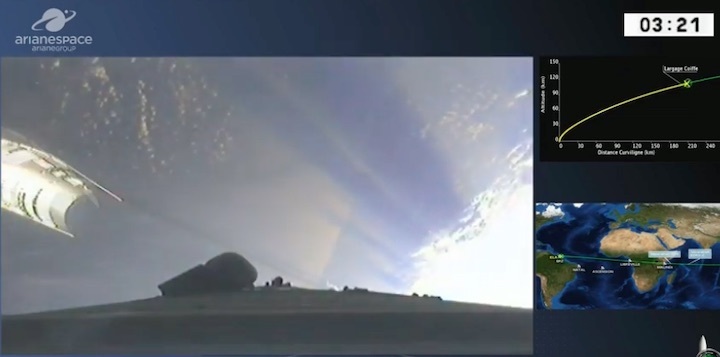
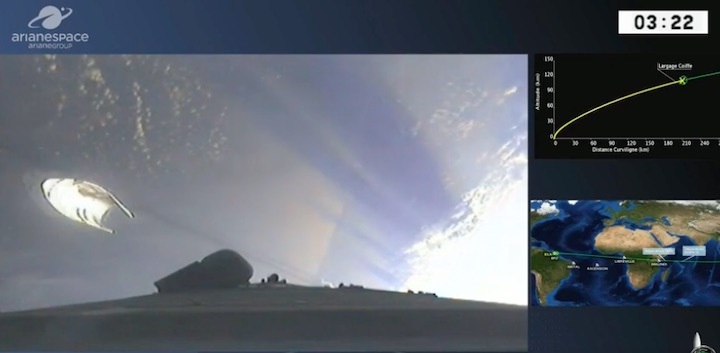
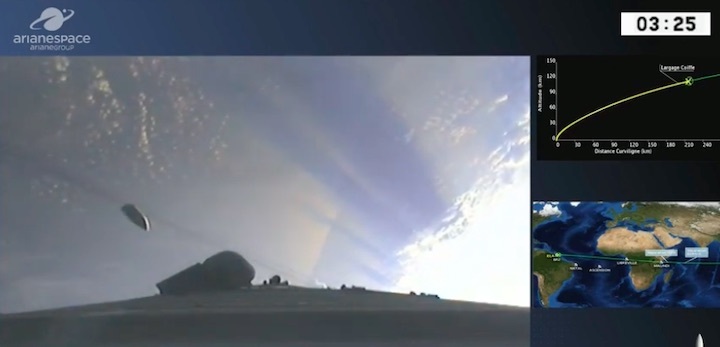
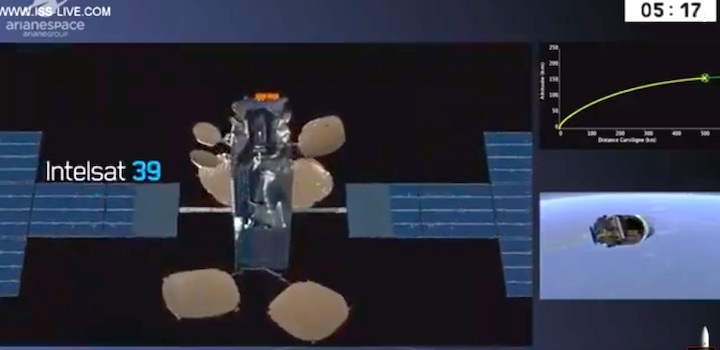
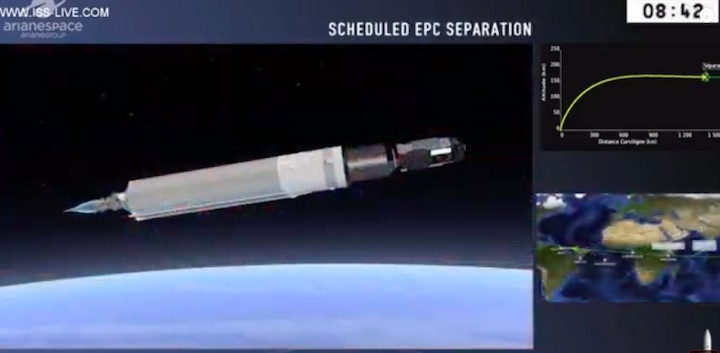
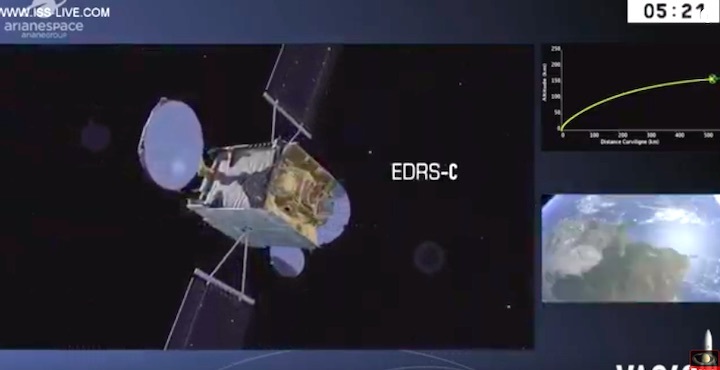
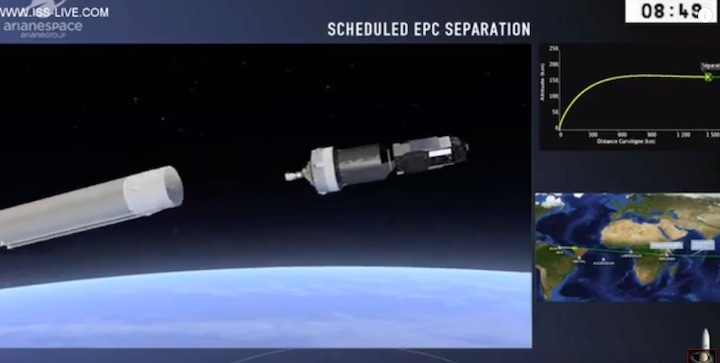
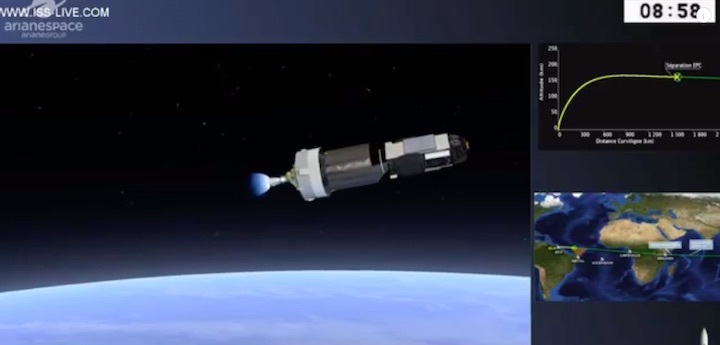
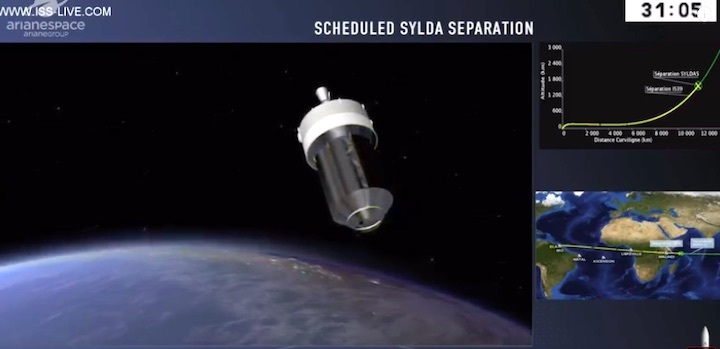
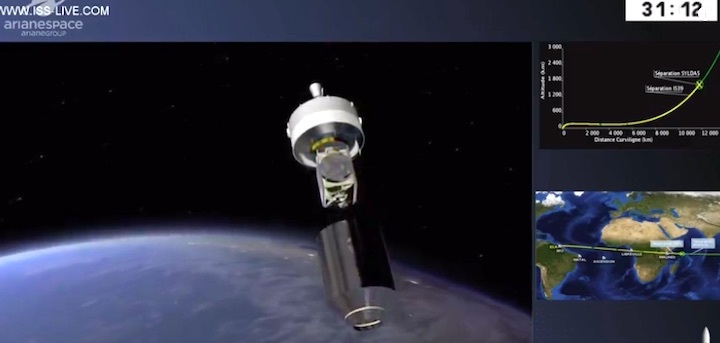
Quelle: arianespace
+++
EDRS-C SUCCESSFULLY LAUNCHED
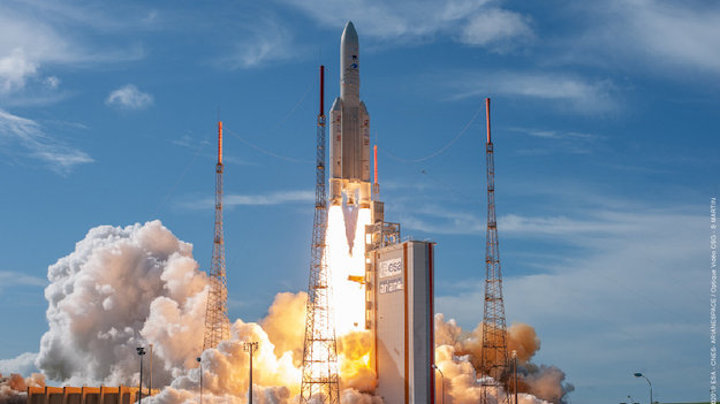
The second satellite to join the constellation that forms the European Data Relay System (EDRS) has been successfully launched.
The satellite was launched on board an Ariane 5 from Europe’s Spaceport in Kourou, French Guiana, on 6 August at 21:30 CEST (19:30 UTC).
EDRS enables people to observe Earth almost live, accelerating responses to emergency situations and spurring the development of new services and products that create jobs and increase prosperity.
EDRS – dubbed the ‘SpaceDataHighway’ by its private operator Airbus – uses innovative laser technology to dramatically cut the time needed for Earth observation satellites to deliver information to the ground.
The satellites can transmit data at a rate of up to 1.8 Gbit/s.
The latest satellite, called EDRS-C, will operate in geostationary orbit. It will join its sister EDRS-A, which was launched in January 2016.
The geostationary position, higher than typical low-Earth orbiting satellites, will enable the constellation to maintain an almost constant connection with the lower Earth observation satellites that could otherwise only transmit their information when in direct line-of-sight with their ground stations, which introduces delays of up to 90 minutes.
Instead, the EDRS satellites can then beam the information back to Earth in almost real time.
Since the end of 2016, EDRS has, on a daily basis, been transmitting the images of Earth acquired by the Copernicus programme’s four Sentinel observation satellites.
It is also due to relay information from the International Space Station, once the required equipment is installed on the outside of Europe’s Columbus laboratory.
EDRS is a new, independent European satellite system, and is a public–private partnership between ESA and Airbus as part of ESA’s efforts to federate industry around large-scale programmes, stimulating technology developments to achieve economic benefits.
On this launch, Ariane 5 features new slightly elongated upper-stage cryogenic tanks. This has allowed them to carry several hundred kilograms more propellant, bringing a launcher performance gain of about 100 kg payload allowance to geostationary orbit, corresponding to an extended burn duration of about 30 seconds.
These modifications are part of ESA’s continued development that makes Ariane 5 and Europe’s future Ariane 6 competitive in the global launch market.
Quelle: ESA

